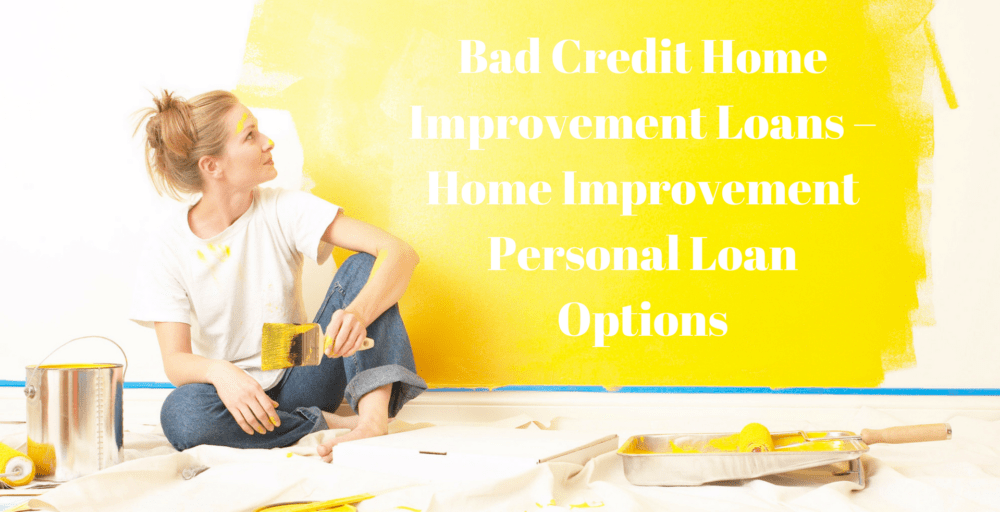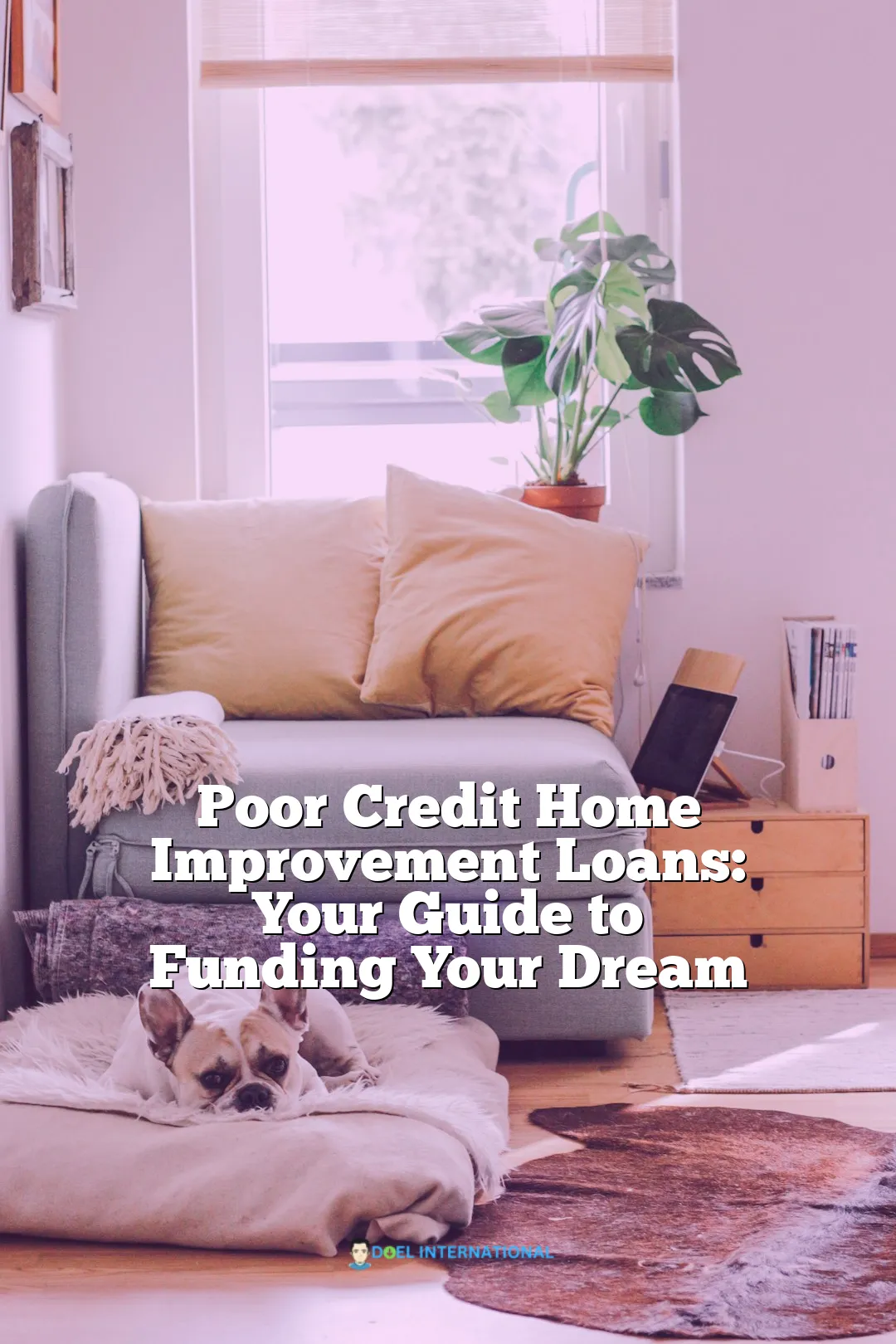Advertisement
poor credit home improvement loans can be a lifeline for homeowners who need to make repairs or upgrades but face challenges securing traditional financing. Navigating the world of loans with less-than-perfect credit can feel daunting, but it’s not impossible. This comprehensive guide will equip you with the knowledge and strategies to access the financing you need, empowering you to transform your home without sacrificing your financial well-being.
We’ll delve into the complexities of obtaining a loan with poor credit, exploring the factors lenders consider and the differences in terms and interest rates you might encounter. We’ll then explore various loan options available, including personal loans, home equity loans, and government-backed programs, providing a clear breakdown of their eligibility requirements and associated costs. This guide will also Artikel practical steps to improve your credit score, making you a more attractive borrower in the future. Finally, we’ll discuss alternative financing options beyond traditional loans, such as crowdfunding platforms and government assistance programs, offering additional pathways to achieve your home improvement goals.
Understanding Poor Credit Home Improvement Loans
/cloudfront-us-east-1.images.arcpublishing.com/dmn/VQTVMZKYXBBLVECIAWNZC46WME.jpg)
Securing a home improvement loan with poor credit can be a challenging endeavor. Lenders are generally hesitant to extend credit to borrowers with a history of financial instability, as it increases the risk of default. This section explores the obstacles faced by individuals with poor credit seeking home improvement financing and examines the factors lenders consider when evaluating these applications.
Factors Lenders Consider for Borrowers with Poor Credit
Lenders meticulously assess various factors when evaluating borrowers with poor credit for home improvement loans. These factors help them determine the borrower’s ability to repay the loan and minimize their risk.
- credit score: This is a primary factor, with lenders often setting minimum credit score requirements for loan approval. A lower credit score typically results in higher interest rates and stricter loan terms.
- Debt-to-Income Ratio (DTI): Lenders calculate DTI by dividing monthly debt payments by monthly gross income. A high DTI indicates that a significant portion of the borrower’s income is already committed to debt repayment, raising concerns about their ability to handle additional debt.
- Credit History: Lenders scrutinize credit history for negative entries such as late payments, defaults, and bankruptcies. These red flags indicate past financial instability and increase the risk of future delinquency.
- Income and Employment Stability: Lenders seek assurance of consistent income and stable employment to confirm the borrower’s capacity to make regular loan payments.
- Down Payment: A larger down payment can mitigate lender risk, as it demonstrates the borrower’s commitment to the project and reduces the loan amount.
- Loan Purpose: Lenders may be more willing to approve loans for essential home improvements that increase the property’s value, such as roof repairs or energy efficiency upgrades, compared to discretionary projects.
Interest Rates and Loan Terms for Poor Credit Home Improvement Loans
The interest rates and loan terms for poor credit home improvement loans are generally less favorable compared to those offered to borrowers with good credit. This is due to the increased risk associated with lending to individuals with a history of financial instability.
- Higher Interest Rates: Borrowers with poor credit typically face significantly higher interest rates, leading to increased borrowing costs and higher monthly payments.
- Shorter Loan Terms: Lenders may offer shorter loan terms to minimize their exposure to risk. This results in larger monthly payments, potentially making repayment more challenging for borrowers with limited financial resources.
- Stricter Loan Requirements: Lenders may impose stricter loan requirements, such as a larger down payment or higher credit score threshold, for borrowers with poor credit.
For example, a borrower with a credit score of 620 might receive a home improvement loan with an interest rate of 10%, while a borrower with a score of 720 might qualify for a rate of 6%. This difference in interest rates can significantly impact the overall cost of the loan.
Types of Loans for Home Improvement with Poor Credit: Poor Credit Home Improvement Loan
 poor credit home improvement loan” title=”Loans loan” />
poor credit home improvement loan” title=”Loans loan” />
Securing a home improvement loan with poor credit can be challenging, but not impossible. Several options are available, each with unique eligibility requirements and terms. Understanding these options is crucial to making an informed decision.
Types of Loans and Their Eligibility Requirements
This section will explore the most common loan types for home improvement with poor credit, detailing their eligibility requirements, interest rates, and loan terms.
| Loan Type | Eligibility Requirements | Interest Rates | Loan Terms |
|---|---|---|---|
| Personal Loans |
|
|
|
| Home Equity Loans |
|
|
|
| Government-Backed Loans |
|
|
|
